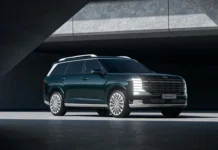
First the Zonda, then the Huayra, and now we have the third act: the Pagani Utopia.
“Simplicity, lightness and the pleasure of driving” dominates this car’s design, according to the team behind Pagani’s “C10” project. To that end, you will not see hybrid power or heavy battery pack. No dual-clutch transmission here: Just a 7-speed manual and twin-turbocharged, Mercedes-AMG-sourced 6.0-liter twin-turbocharged V-12.
The Italian automaker’s latest mid-engined supercar delivers 864 brake horsepower (bhp) to the rear wheels, along with 811 lb-ft of torque. The transversely mounted Xtrac-developed unit is available either as an automatic manual transmission, or as a “pure manual”, sending its power to a electro-mechanical limited-slip differential. “Moreover”, the company’s statement says, “in order to best match the wishes expressed by Pagani enthusiasts, its aficionados, a virtual manual would not be acceptable, so a real seven-speed manual transmission had been developed.”



You know, just in case you were thinking about the Koenigsegg CC850 instead.
Throughout the Pagani Utopia, you get a similar level of exotic materials and mind-bending design as you’ve come to expect from the company’s previous cars. There’s a carbon-titanium composite (or “Carbo-Titanium”) chassis, as well as a new type of carbon fiber for the bodywork. Pagani says its efforts made the Utopia’s body 38% stiffer for the same material density. Inside, Pagani mills the steering wheel and pedal boxes from a single piece of aluminum. You also get an exposed, gated shifter as a capstone for an already over-the-top experience.
At all four corners, you get double-wishbone suspension, not to mention forged aluminum wheels, six-piston front brake calipers and four-piston rear calipers.
No word on pricing for the Pagani Utopia, but if you have to ask…Just 99 units will emerge from the initial run. Don’t expect this sort of automotive excess to come cheap.


























